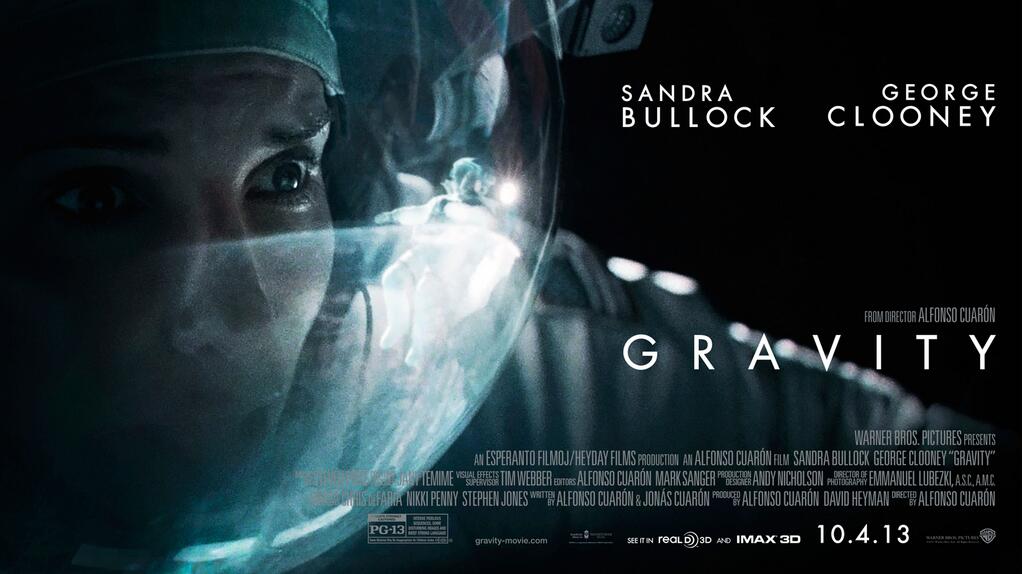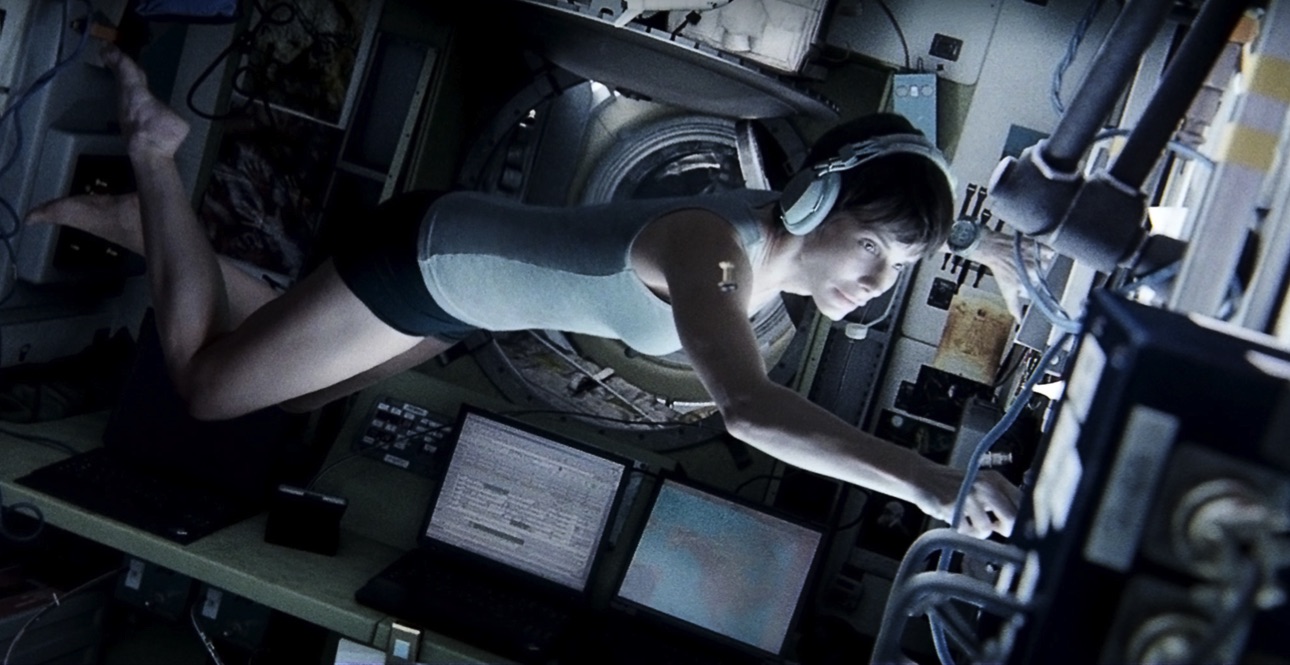Gravity was spectacular.
I saw the film two weeks ago, and whenever it’s brought to mind I’m right back in the absolute sense of wonder I experienced in the theater.

Starring the quietly magnetic Sandra Bullock as a civilian mission specialist sent up
to work on the Hubble Space Telescope and George Clooney as the veteran commander of her shuttle, Gravity demands to be seen not only on as big a screen as possible but in
3D. If you’ve heard me talk (or read me write) about 3D, you know that I seldom recommend it.
Most 3D takes me out of what’s onscreen rather than immersing me in it — an experience hardly worth extra cash and the hassle of fitting those glasses over the ones I’m already wearing. Same goes for dodgy CGI. The 3D in Gravity, however, is not the usual diorama-like series of planes; it manages to create a rounded, seamless depth that feels truly three-dimensional.
And the special effects are completely believable, too. While Bullock displays serious acting chops and, intermittently, a great pair of legs in what is for maybe half its running time essentially a one-woman show in terms of character, the environment created around her is at least an equal attraction. I would have been satisfied had Gravity simply been a virtual travelogue like the 180°-panorama short films we used
to see on the amusement piers I frequented as a kid.

Images © 2013 Warner Bros. Entertainment.
You might be familiar with complaints about the film’s scientific fealty in terms of the placement of certain objects in Earth orbit or, well, gravity itself. My short answer to this is that while I’m totally sympathetic to the disappointment felt by folks with a closer relationship to astrophysics than I — and while a sketchy development necessary to the story did turn out to be a fiction — since I bought everything that was happening onscreen as I watched, I really couldn’t argue with it.
Gary Sinise is not a double amputee. Neither Henry Cavill nor Christopher Reeve
could actually fly. Movies are full of artful deception and the audience willingly participates if the craft of the filmmakers is worthy. Who am I going to believe, Neil deGrasse Tyson or my own eyes? (That’s not entirely a rhetorical question, mind you.) Entertainment Weekly also had a few experts fact-check the film, while The Hollywood Reporter published the largely rave reactions of living legend Buzz Aldrin.
Readers who haven’t seen it are duly warned that there are spoilers for the film through those links, just as there are coming up here after the next image — including a mention of the last scene of the movie. I truly hope that if you’re a holdout what I’ve written here changes your mind and you get to see Gravity while it’s still at the proverbial theater near you.

I questioned around the time that Bullock’s character, Dr. Ryan Stone, was quickly fading whether she would even survive. The film was so matter-of-fact that Stone’s death seemed like a distinct possibility and one I realized I was okay with. I rooted for her to make it, of course; however, watching her travails, at such an intimate lack of remove thanks to the close-quarters cinematography and enveloping 3D, left me feeling her exhaustion. It’s not that I didn’t want her to keep trying, but eventually luck, oxygen, and the spark of existence must run out.
What didn’t occur to me until I heard people discussing it after the film was that her surprise visit by the apparently dead Lt. Matt Kowalski, played by Clooney, might have been intended as a genuine wake-up call from beyond the veil rather than a figment of her oxygen-deprived mind. I tend to agree with critics who deemed the addition of a lost child to Stone’s backstory a distracting embellishment, yet there’s something to be said for the utter randomness of her daughter’s death being reflected in her own present circumstances.
Although I wasn’t expecting us to follow Stone’s capsule back to Earth, given that we’d spent the entire film in space up to that point, I appreciated the filmmakers’ restraint in drawing the curtain shut before any rescue personnel actually showed up. Having Stone crawl out of the ocean onto land, standing triumphantly on wobbly legs in the bright sun, was for me a nice touch in the way it reflected the emergence of primordial life, but your tolerance for visual metaphor may vary.

Gravity was directed by Alfonso Cuarón from a script written by Alfonso and Jonás Cuarón, edited by Alfonso Cuarón and Mark Sanger, produced by Alfonso Cuarón for Esperanto Filmoj and David Heyman for Heyday Films, and distributed by Warner Bros. Entertainment. At this writing it has earned $200 million in the US and over $350 million worldwide per Box-Office Mojo against a $100 million budget, with a crazy-high score of 96 on Metacritic.
Related: A Great Escape • Luna Ranger • Invasion of the Body Switchers

No comments:
Post a Comment